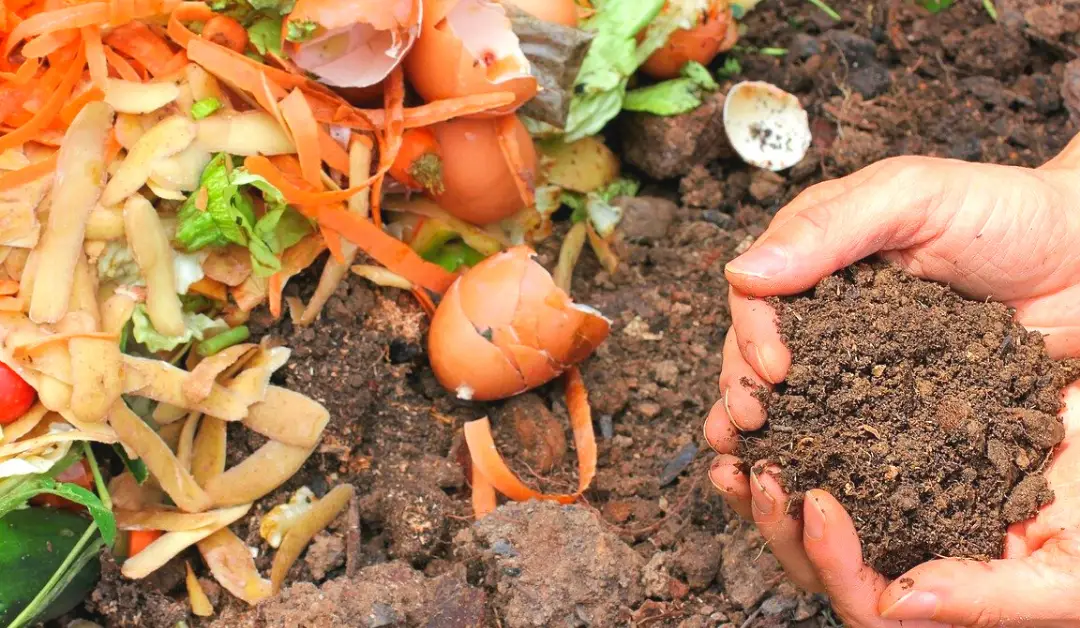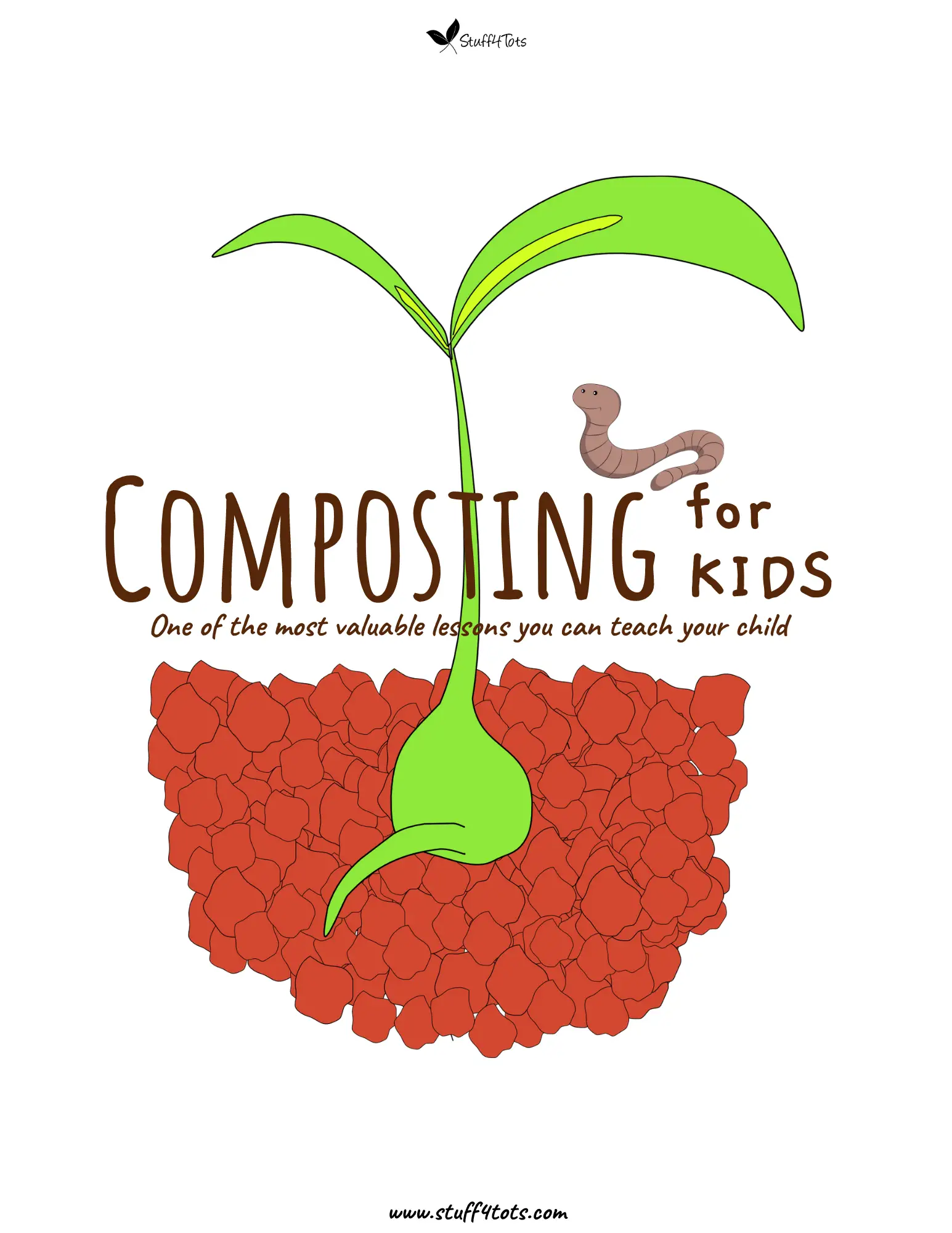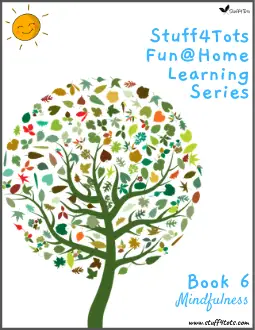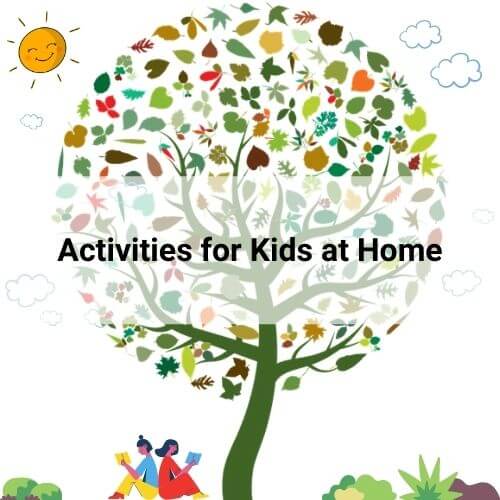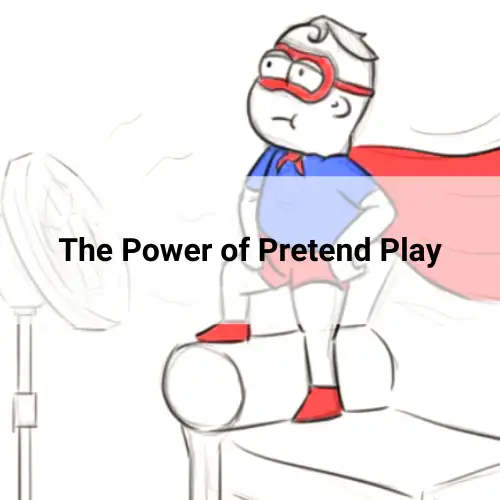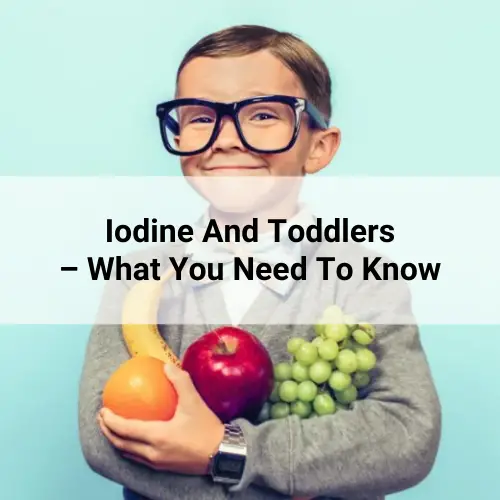Table of Contents
Composting For Kids
Composting is a fun and easy-to-learn activity that kids can take part in, benefit the environment and learn some great lessons and skills from all at the same time.
On top of this, composting is a healthy way to reduce your family’s landfill waste, and to encourage your children to learn about gardening and nature. Food scraps and other household organic matter will be turned into fertilizer, teaching your kids to reuse items instead of sending them off to the dump.
Getting yourself and your children involved in composting will be a great activity to do, and will be so beneficial to the enivornment and to your garden as well!
To help get you started, we have a free ‘Composting For Kids’ Activity Book for you to download at the end of the article.
Explaining Composting To Your Child
Composting is a relatively simple process to explain. It is a term used when a person controls the breakdown (decomposition) of natural waste, such as leaves, vegetables, and old fruit.
Composting is usually done in a bin or in a heap, where organic and natural waste is allowed to mix together, and over time it forms a crumbly fertilizer which is good food for plants when mixed into the soil.
A lot of children are familiar with the term ‘Circle of Life’ (thanks Lion King) and so we find it helpful to refer to the Composting Cycle where the nutrients go around and around in the environment.
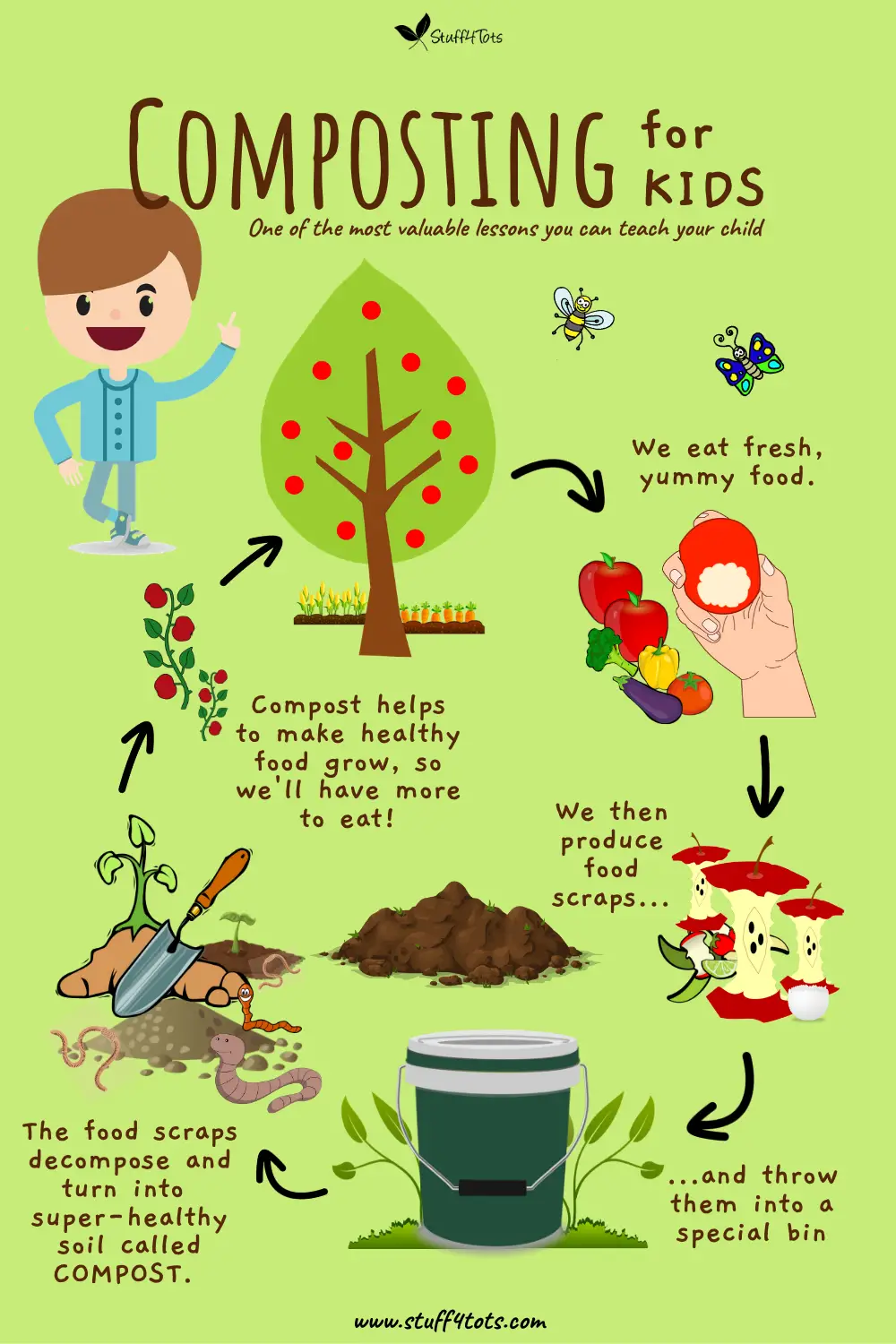
Benefits Of Composting For Your Child
Teaching kids to compost is a great way to introduce them to the wonders of nature and the environment.
It is a way to remove screen time, and encourage your child to spend more time outdoors.
Here are a few benefits of composting for your child:
- Composting teaches your child how the environment works, and how to reduce their own waste.
- It helps to further understand the three environmental R’s – reduce, reuse, and recycle.
- By sorting waste for composting, your children will learn the difference between biodegradable products and what can and can’t be turned into compost. They can either help collect leaves from the garden or help in the kitchen to find food scraps to use.
- You will be introducing your child to the environment and the way it works by showing them how to convert waste into nutrient-rich soil. It is a great way to demonstrate the cycle of life, and how different materials break down. Depending on their age, there are some great biology, chemistry, and physics lessons to be taught through composting.
- Composting teaches kids the importance of insects, worms and slugs, and how they add value to the eco-system. It also pushes the importance of microorganisms, and how the smallest animals can have huge roles in the ecosystem.
- It teaches them an appreciation for the environment, and gives them the satisfaction of doing their bit as a friend of the environment!
Are your little ones a little too little for composting? Try engaging them with the best baby toys for 6-12 months, or the best toys for newborn babies instead.
Benefits Of Composting For The Environment
Composting has some great benefits for your children, and some amazing environmental benefits as well.
- Compost enriches the soil, retains moisture, and suppresses plant diseases, keeping away pests.
- Making compost reduces the need for chemical fertilizers.
- Compost encourages the production of beneficial fungi and bacteria which break down organic matter to create humus, which is a rich nutrient-filled material.
- Composting reduces methane emissions from landfills and it lowers your family’s carbon footprint. More organic waste used for composting is less waste sent to the landfill.
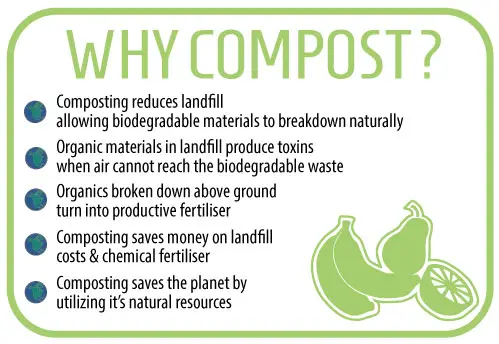
What You Can And Can’t Compost
In order to compost successfully, you need to know what you can or can’t compost. Some items compost beautifully, breaking down well in the right conditions, while other items just don’t work at all.
The compost your kids make will only be as good as the ingredients they use. Make sure you help your children learn what they can and can’t compost.
Items that can be composted include:
- Fruit and vegetable scraps
- Coffee grinds
- Eggshells
- Leaves
- Twigs
- Branches
- Grass clipping
- Coffee filters
- Newspapers (nowadays newspaper ink is mostly non-toxic)
Knowing what not to compost is just as important as knowing what to compost.
Items that should not be composted include:
- Meat – Meat creates odour problems and attracts rodents and flies.
- Bones – Just like meat, bones create an odour problem and attracts pests.
- Fat – Fat creates odour problems and attracts pests.
- Cheese – Cheese creates odour problems and attracts pests.
- Oils – Oils create odour problems and attracts pests.
- Milk – Milk creates odour problems and attracts pests.
- Pet waste – Pet waste might contain parasites, bacteria, pathogens, germs, and viruses.
- Diseased plants and flowers – These could infect other plants and flowers.
- Glossy Magazines – the ink can be toxic for the soil
Kids as young as three or four can learn what is able to be composted and what should not be added to the compost heap. The earlier you start exposing them to this, the sooner they will be comfortable with composting on their own.
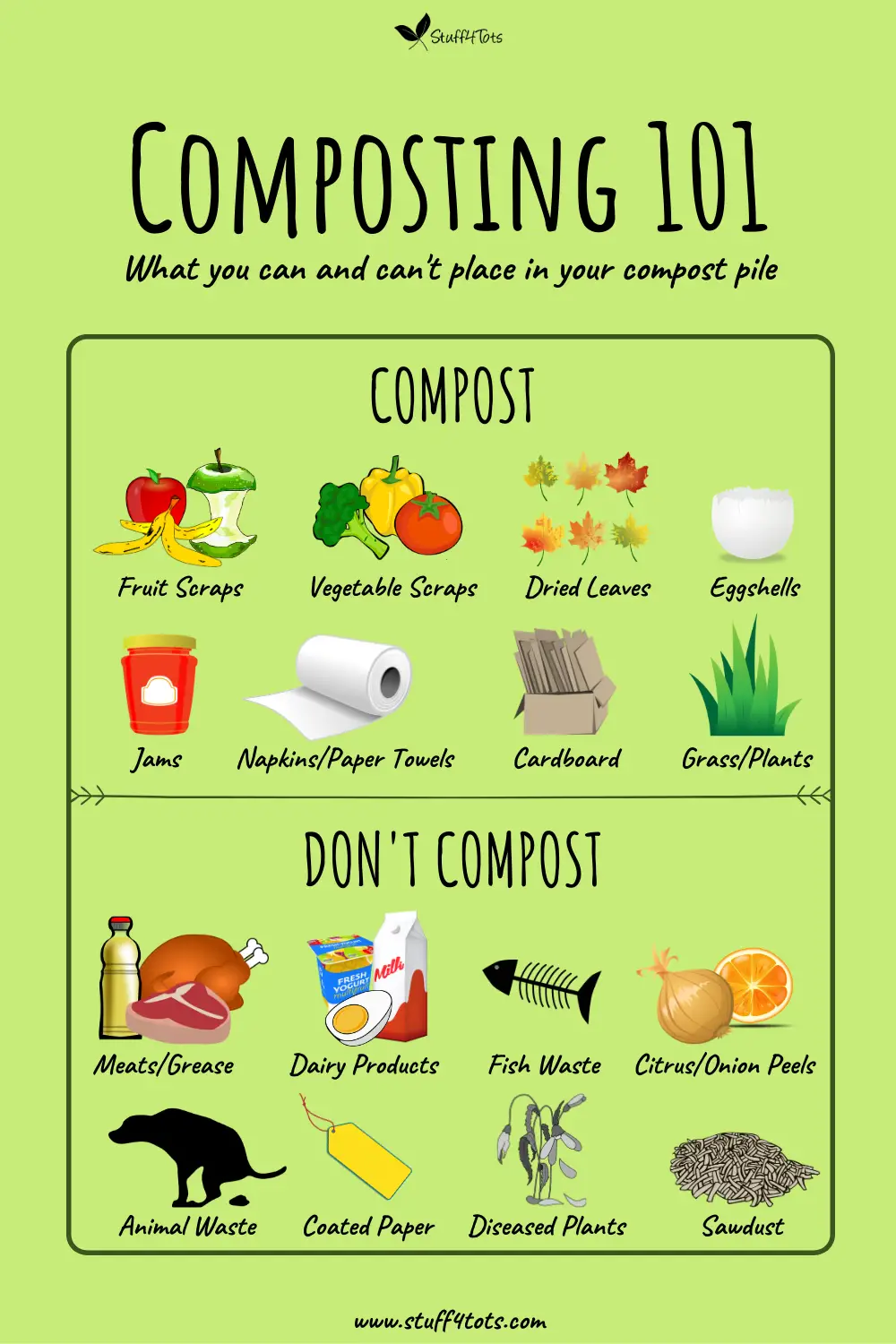
The Basics Of Composting
Composting really is not complicated, and there are a few basics that go into it. All composting techniques require three basic ingredients, which can easily be taught to your kids.
Browns – Brown materials include dead leaves, branches, and twigs.
Greens – Green materials include grass clippings, fruit scraps, vegetable waste, and coffee grounds.
Water – All composting needs water, and having the right amount of water is important for compost development.
Composting needs to have equal amounts of browns to greens, with the different layers being alternated with different sized particles. Brown materials work to provide carbon for the compost, the green materials work to provide nitrogen and the water provides moisture to break down the organic matter.
Composting can be fun, but don’t forget about old-fashioned pretent play, too.
How To Compost At Home With Your Kids
There are quite a few different ways to create a compost pile at home, but here is the best way to create a compost heap with your kids. It is a general method to make a compost heap and is doable for kids as well.
You will need some pitchforks, shovels, water hoses, and some adult supervision! You can check out handy garden tool set for kids on Amazon.
- Identify a dry and shady spot near a water source to place your compost pile or bin.
- Add brown and green materials to the area or bin, making sure to break down larger pieces.
- Kids can moisten the dry materials before they are added to the compost mix.
- Once the compost pile has been established, get the kids to mix in grass clippings and green waste materials, burying fruit and vegetable waste under at least 10 inches of compost material.
- The kids can also cover the compost heap with a tarp to keep it moist.
- Once the material at the bottom of the compost heap is dark in colour, it is ready to use. This can take anywhere between two months to a few years, so it teaches some patience as well!
Take note to make the compost heap away from your house, and away from other houses, as it can be quite stinky. Find the bottom corner of the garden or somewhere distant from the house. The best foundation for a compost heap is a layer of sand, bricks, or a layer of gravel around 1m long by 1m wide.
If you are placing the compost heap on bricks, make sure there are spaces between the bricks to allow air to move through and for water to run away. The best compost heaps have small spaces to allow air to move around.
Composting is a great way to educate your children about how food grows. For other types of education, try these educational toys.
Indoor Composting For Kids
If you cannot compost outside, there are some options to compost indoors as well. You can make your own compost bin using a foot-pedal style kitchen dustbin. You can find these specially made for composting at a hardware store or online at Amazon.
These dustbin-style compost bins for inside have to be used with charcoal tablets to reduce the smell, although this doesn’t always work. It is also not the best idea if you have pets, as they might see the compost bin as their new food bowl!
Another option is to use a metal pail on the counter as a compost bin. The kids can easily use this every day to add in new organic waste materials, but once again the smell might be too overwhelming to keep inside, and you would need the space to allow for this as well.
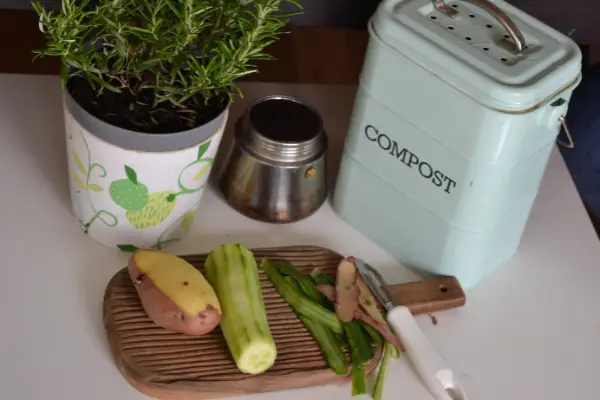
Making Composting A Daily Activity For Kids
You are able to make composting part of your child’s daily routine, from an early age. The sooner they get into the habit of composting daily, the easier it will be to maintain their own compost heap.
Get them to head on over to the compost heap after dinner each night with the organic waste from preparing food. Have a separate container in your kitchen to collect organic waste during the day, for them to empty into the compost bin at night.
You can also schedule some weekly composting activities with the whole family, such as turning hot compost, adding worms to the compost heap and spreading the compost throughout the garden.
Composting may be interesting, but if you’re looking for some fun holiday craft ideas, check out this article.
Composting With Kids
Composting can teach your kids so many lessons, helping them learn how the circle of life works, and helping them develop an environmentally-friendly attitude.
While composting is a great way to teach kids some valuable lessons, it is also incredibly beneficial for the environment as well.
You can easily work with your kids to build a compost heap at home, and create a schedule and routine for your kids to become responsible for composting on their own. It will take time to get the first bit of compost, but it is a worthwhile project for the whole family!
Is your 1 year old lacking in stimulation? Try these best toys for 1 year olds.
Free “Composting for Kids” Activity Book
What are you waiting for?
Get started now by downloading your free ‘Composting for Kids’ activity book.
Just click here or on the image of the book to download.
Want to receive a Free Weekly Activity Book like this?
We put together weekly Activity Books like this for children ages 6 to 10 and send them out free to our email subscribers.
Topics include Healthy Eating, the Human Body, Mindfulness, Gardening, etc.
Either sign up using the form below or head on over to https://www.stuff4tots.com/activities-for-kids-at-home/ to find out more.
